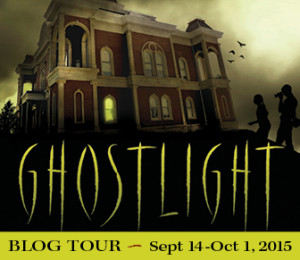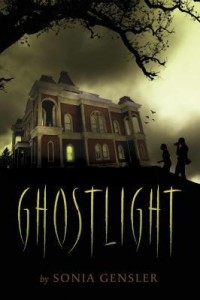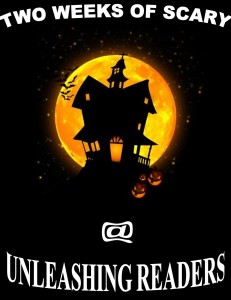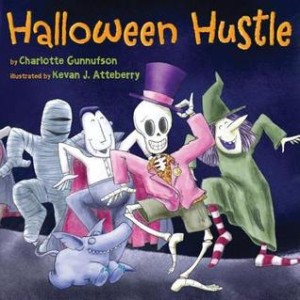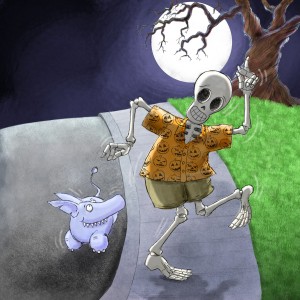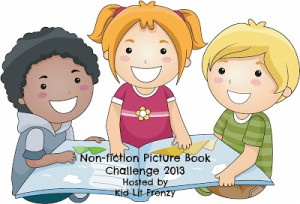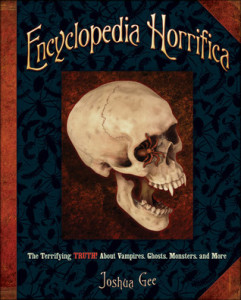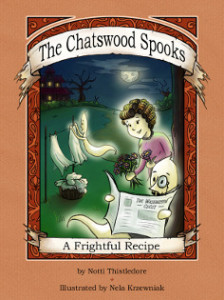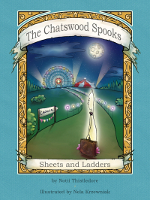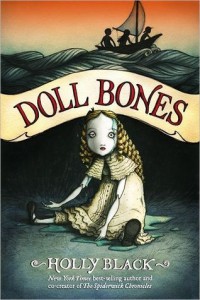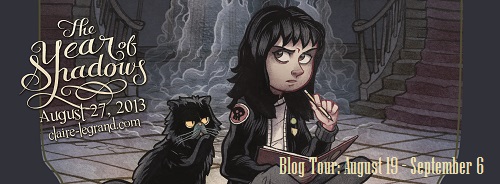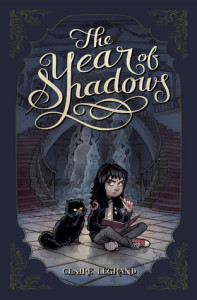Ghostlight
Author: Sonia Gensler
Published August 4th, 2015 by Knopf Books for Young Readers
Goodreads Summary: Things that go bump in the night are just the beginning when a summer film project becomes a real-life ghost story!
Avery is looking forward to another summer at Grandma’s farm, at least until her brother says he’s too old for “Kingdom,” the imaginary world they’d spent years creating. Lucky for her, there’s a new kid staying in the cottage down the road: a city boy with a famous dad, Julian’s more than a little full of himself, but he’s also a storyteller like Avery. So when he announces his plan to film a ghost story, Avery is eager to join in.
Unfortunately, Julian wants to film at Hilliard House, a looming, empty mansion that Grandma has absolutely forbidden her to enter. As terrified as Avery is of Grandma’s wrath, the allure of filmmaking is impossible to resist.
As the kids explore the secrets of Hilliard house, eerie things begin to happen, and the “imaginary” dangers in their movie threaten to become very real. Have Avery and Julian awakened a menacing presence? Can they turn back before they go too far?
My Review: I do not do creepy. No creepy books, movies, haunted houses…nothing. So, a creepy book had to sound really good or be recommended to me by someone I trust for me to read it. This one was both, so I agreed to give it a chance. Although it did scare the kajeebees out of me, I am very glad that I picked it up. First, the ghost story part of the plot is done so well. It isn’t over the top, it seemed real, and it really got me! Second, the book was so much more than a ghost story. It was a look at rural vs. urban, celebrity, the definition of family, mental disorders, filmmaking, and more. Third, the characters seemed real. You have four very different preteens/teens, but they all represent a different type of person. Each has flaws, and each is wonderful
Teachers’ Tools for Navigation: I was fascinated by all of the filmmaking information that Julian shares with Avery. I would love to use this part of the book with students, as well as information from other sources, to help them make a film from a script they wrote. They could also use the information to make a book trailer with good filmmaking technique.
P.S. I book talked Ghostlight on Tuesday to my class, and 90% of them put it on their TBR list. They all want to know what is going on in that house!
Discussion Questions: Would you forgive Julian and Lily after what they did to Avery?; If you were Avery, and you were asked about your father, how would you respond?; What does Avery’s family situation tell us about what family is?; What specifically made the ghost in Ghostlight scary?;
We Flagged: “…Julian paused the video. This time I could see the wispy thing hanging in the air across from Lily. It wasn’t a person, but it was something.” (p. 119)
Book Trailer:
Read This If You Love: All the Lovely Bad Ones by Mary Downing Hahn, Doll Bones by Holly Black, Liesl & Po by Lauren Oliver, Seer of Shadows by Avi, City of the Dead by Tony Abbott, Skeleton Man by Joseph Bruchac
Sonia Gensler has some more books to share that you may enjoy: Ghostlight, my first middle grade novel, was inspired by classic B&W horror films and the spine-tingling tales of authors like Mary Downing Hahn and Patricia Clapp. To celebrate its release, I thought I’d share other recent middle grade ghost novels that raise the stakes with deft characterization and unique conflicts.
Breathe: A Ghost Story by Cliff McNish (2006): Jack and his mother move into an old farmhouse, but only he can see the resident ghosts. Having once nearly died of asthma, Jack has a special sensitivity to those who have crossed to the other side. In fact, Jack senses several ghostly individuals within the house, but the more he learns, the more vulnerable he becomes to the most powerful of the spectral entities — one who wishes to control all the inhabitants of the house, living or dead. Breathe presents the ghostly characters and their conflicts in an innovative way that will keep readers gripped to the very end.
Seer of Shadows, by Avi (2008): Young Horace apprentices with a society photographer in 19th-century New York City. When Horace finds an eerie image on a developed photograph — the likeness of the subject’s dead daughter — dark things begin to happen. I am fascinated by the notion of Victorian spirit photography, so this story was particularly to my liking! (Another spirit photography novel for readers interested in more mature characters and themes would be Cat Winters’ In the Shadow of Blackbirds.)
The Aviary, by Kathleen O’Dell (2011): Clara lives in the crumbling Glendoveer Mansion, where her mother is housekeeper. Her life is comfortable enough, but she can’t go outside, has no friends, and actively fears the exotic birds kept by old Mrs. Glendoveer. One day, the mynah bird speaks to her, and he seems to be saying a name. Eliot. When Clara investigates, she gradually learns the dark history of the Glendoveer family, and in turn discovers secrets from her own past. While not a traditional ghost story, this Gothic tale is full of mystery and chilling reveals.
Doll Bones, by Holly Black (2013): Zach has decided to put childhood things behind, but when his old friend Poppy tells him she is being haunted by her china doll, he agrees to help her properly bury it. Creepy dolls aside, this book is haunting in its look at childhood play and imagination–particularly what may be lost in the transition from childhood to adolescence.
A Curious Tale of the In-Between, by Lauren DeStefano (2015): Pram, who can see and speak with the dead, wishes more than anything to meet her living father. The mysterious Lady Savant says she can help, but Pram soon learns the lady has a dark agenda of her own. This captivating novel is more mystery than horror, and I was intrigued by how it represented interactions between the living and dead. The novel’s focus on the manipulation of memories reminded me (in a very good way) of the film Inception.
About the Author: Sonia Gensler is also the author of the young adult novels The Dark Between and The Revenant. She grew up in a small Tennessee town and spent her early adulthood collecting impractical degrees from various Midwestern universities. A former high school English teacher, she now writes full-time in Oklahoma. To learn more, and to download a free curriculum guide, visit soniagensler.com or her Twitter: @soniagensler
Giveaway:
Follow the Ghostlight Tour!
|
Mon, Sept 14
|
Cracking the Cover
|
|
|
Tues, Sept 15
|
Ms. Yingling Reads
|
|
|
Wed, Sept 16
|
Charlotte’s Library
|
|
|
Thurs, Sept 17
|
The Book Smugglers
|
|
|
Fri, Sept 18
|
Unleashing Readers
|
|
|
Mon, Sept 21
|
The Hiding Spot
|
|
|
Tues, Sept 22
|
Proseandkahn
|
|
|
Wed, Sept 23
|
Word Spelunking
|
|
|
Thurs, Sept 24
|
The Book Monsters
|
|
|
Fri, Sept 25
|
GreenBeanTeenQueen
|
|
|
Mon, Sept 28
|
The Haunting of Orchid Forsythia
|
|
|
Tues, Sept 29
|
Kid Lit Frenzy
|
|
|
Wed, Oct 1
|
Mother Daughter Book Club
|
Recommended For:
**Thank you to Barbara from Blue Slip Media for providing a copy for review and giveaway as well as a big thank you to Sonia Gensler for her guest post!**
